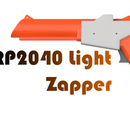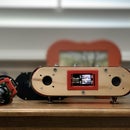Introduction: Dirty Hands; the Science Behind Cleaning Your Hands
Abstract
Due to the Covid-19 pandemic, the interest in effectively cleaning your hands has increased. Cleaning your hands is a crucial habit in maintaining a healthy lifestyle. My experiment sought to discover the most effective hand disinfectant by comparing hand soap, hand sanitizer, and bottled water. I hypothesized that hand soap washed with softened water will kill the most bacteria. Using agar-based Petri dishes and swabs, I measured the bacteria on my index, middle, and ring finger before and after I applied the disinfectant. I then let the Petri dishes grow bacteria in a temperature-controlled incubator for one to three days. After the Petri dishes had a sufficient amount of bacteria, I counted the bacteria colonies of each Petri dish. The outcome contradicts my hypothesis. The water killed the least amount of bacteria with an average of -7.64% effectiveness. Coming in 2nd place was the hand soap at 73.96% effectiveness. The hand sanitizer won with an effectiveness of 80.93%. Because of my experiment, I am more confident in using hand sanitizer as a quick and effective way to clean my hands.
Supplies
- Ez Bio Research 18 Petri Dishes
- Ez Bio Research 18 Swabs
- Plastic Storage Box
- Clamp Lamp
- Ball
- 3 Pairs of Rubber Gloves
- Texas Spring Water Bottled Water
- Sams Club Healthy Hands Hand Soap
- Purell Advanced Hand Sanitizer
- Raspberry Pi Zero W
- AM2302 Temperature Sensor
- 120v Relay
- GPIO Wires
- Black Storage Box
- Heat Lamp
- Notebook
Step 1: Research Problem
The pandemic has heightened the interest in the effectiveness of hand soaps and hand sanitizers. I started questioning if hand sanitizer, which claims to kill ninety-nine point nine percent of all bacteria, is better than ordinary hand soap, which claims to freshen your hands? Can bottled water act as a solution to wash away bacteria? The Centers for Disease Control and Prevention encourages the use of hand soap and only recommends hand sanitizer if your hands are not visibly greasy and dirty. Why?
Step 2: Research Question
Which is the best way to clean your hands: hand soap washed with softened water, hand sanitizer, or ordinary bottled water? Does bottled water wash away any bacteria? How effective are hand soap and hand sanitizer?
Step 3: Background Research
Hand sanitizer works by killing microbial cells. Hand sanitizers use seventy percent isopropanol alcohol, also called rubbing alcohol. They contain a small amount of water, boosting the penetration. On bacterium, sanitizers work by disturbing the membrane of a cell. For a virus, sanitizers disrupt the outer coat of a virus.
Ordinary hand soaps are made of chemicals called alcohol or chlorine, that kill can bacteria. Hand soap contains compounds called surfactants. The surfactants remove germs by decreasing the surface tension of water and shattering molecular barriers so that bacterias are not able to get a hold of your hand. The bacterias then slide into the moving water. Hand soap is the recommended method for cleaning hands from the Centers for Disease Control and Prevention.
Bacteria is a single-celled organism. Some bacteria can be healthy for you, while others can give you severe illnesses. Healthy bacteria enhance nutrients in soils and help you to digest foods. The harmful bacteria attack animals, humans, and plants, by releasing venomous chemicals into their bodies.
Step 4: Hypothesis
I hypothesized that ordinary hand soap washed with softened water will remove more bacteria than hand sanitizers or plain bottled water alone.
Step 5: Raspberry Pi Controlled Incubator
To further control the variables, I used a Raspberry Pi to run a python script that automated the heat lamp to turn off at the desired temperature and turn on if the temperature got too low. I have attached the code I used for the incubator below.
- Remove the lid of a plastic storage box.
- Take a clamp heat lamp and clamp it to the side of the box.
- Plug the lamp into the relay.
- Plug the relay into pin 17 on the Raspberry Pi.
- Plug the AM2302 Temperature Sensor into pin 8 on the Raspberry Pi.
- Run the temp.py script
- The temperature must be between 85° - 100° Fahrenheit for the Bacteria to Grow, too high of a temperature, and Bacteria will burn up, too low and they will not grow.
Step 6: Labeling the Petri Dishes
Before we dive into the part about collecting bacteria, we must first organize the Petri Dishes.
- Gather 6 Petri dishes.
- Group them into piles of 2.
- In the first pile, label every other petri dish on a piece of tape.
- Finger before hand soap.
- In the first pile, label every petri dish not labeled.
- Finger after hand soap.
- In the second pile, label every other petri dish on a piece of tape.
- Finger before hand sanitizer
- In the second pile, label every petri dish not labeled.
- Finger after hand sanitizer
- In the third pile, label every other petri dish on a piece of tape.
- Finger before soft water
- In the third pile, label every petri dish not labeled.
- Finger after soft water
Step 7: Gathering the Bacteria
Now that we have labeled each petri dish let's collect the bacteria needed to conduct our experiment.
- Put 1 glove on each hand.
- Roll a ball in the yard for 1 minute with gloved hands.
- Put the ball down.
Step 8: Measuring the Bacteria
Finally, we will now measure the bacteria on your hand before and after we apply the disinfectants.
- Choose a hand to experiment on, be careful to not touch anything with that hand.
- Wet 6 sterile swabs with bottled water.
- Swab your index finger on the hand you have chosen, and put it into the petri dish labeled, Finger beforehand soap. Swab your middle finger and put it into the petri dish labeled, Finger before hand sanitizer. Swab your ring finger and put it into the petri dish labeled, Finger before soft water.
- Clean your index finger with 1/2 teaspoon of hand soap rinsing with water for 10 seconds, then clean your middle finger with 1/4 teaspoon of hand sanitizer for 10 seconds, and lastly clean your ring finger with plain soft water for 10 seconds.
- Swab your 3 fingers and rub the swabs onto the appropriate Petri dishes.
- Tape the petri dish shut, careful not to seal it, and then place it upside down in the incubator.
- Repeats steps 7-8, 3 more times.
Step 9: Monitoring the Petri Dishes
Now that we have are Petri dishes filled with bacteria and placed in the incubator, we will now monitor them for roughly 3 days.
- Leave the Petri dishes in the incubator for 1-3 days.
- When the Petri dishes have a sufficient amount of bacteria remove them from the incubator, and count the number of bacterial colonies in each petri dish. Record the numbers of bacterial colonies in your notebook.
- The formula to calculate the effectiveness is simple. Take the after petri dish and divide it into the before and times by 100. Subtract that from 100 and you will get the effectiveness of the disinfectant.
- Once finished with the Petri dishes you can put them in a ziplock bag and place them in your outside trash can.
Step 10: Risk and Safety
After you have completed this experiment, it is important to properly dispose of the Petri dishes, so that you do not create too much bacteria, which can pose a danger to your health and the environment.
Step 11: Data Analysis Method
I recorded in my notebook the number of bacterial colonies in the Petri dishes. The disinfectant which has the greatest difference in the reduction of bacterial colonies in the before and after Petri dishes will be the most effective.
Step 12: Bibliography
Here are the websites I gathered my research from:
Centers for Disease Control and Prevention. (n.d.). Why Wash Your Hands? Read the Science Behind the Recommendations. Centers for Disease Control and Prevention (CDC). Retrieved November 19, 2021, from https://www.cdc.gov/handwashing/why-handwashing.html
Harvard Health. (2006, July 1). Wash your hands. Retrieved November 19, 2021, from https://www.health.harvard.edu/newsletter_article/wash-your-hands
Jenny Hall. (2012, January 10). Do hand sanitizers really work? University of Toronto. Retrieved November 19, 2021, from https://www.utoronto.ca/news/do-hand-sanitizers-really-work
Hickok, K. (2020, March 7). How does hand sanitizer work? Live Science. Retrieved November 19, 2021, from https://www.livescience.com/hand-sanitizer.html
Centers for Disease Control and Prevention. (n.d.). Using Hand Sanitizer – Read the Science Behind the Recommendations. Centers for Disease Control and Prevention (CDC). Retrieved November 19, 2021, from https://www.cdc.gov/handwashing/show-me-the-science-hand-sanitizer.html
Minnesota Department of Health. (n.d.). Which Soap is Best? - Minnesota Dept. of Health. Retrieved November 19, 2021, from https://www.health.state.mn.us/people/handhygiene/how/bestsoap.html
Erica Loop. (n.d.). How Does Hand Soap Work to Kill Bacteria? Toms of Maine. Retrieved November 19, 2021, from https://www.tomsofmaine.com/good-matters/natural-products/how-does-hand-soap-work-kill-bacteria
Centers for Disease Control and Prevention. (2021, August 10). When and How to Use Hand Sanitizer. Centers for Disease Control and Prevention (CDC). Retrieved November 19, 2021, from https://www.cdc.gov/handwashing/hand-sanitizer-use.html
EZ BioResearch, LLC. (2015). EZ Science Fair Project E-Book 2015 V-3 (V-3 ed.) [E-book].
Step 13: Analysis of Data
During my experiment, the Purell hand sanitizer killed the most bacteria, having an approximate average of 80.93% effectiveness in killing bacteria, 6.9% more effective than hand soap. The Sams Club Healthy Hands Hand Soap had an average effectiveness of 73.96%, while the Texas Spring Water Bottled Water came in last place with effectiveness of only -7.64%. However, a fly appeared in the petri dish in the first batch, which increased the growth of bacteria in the after-water petri dish. Without counting the first batch, the average effectuality of water is 43.3%, 50.94% more effective than before.
Step 14: Conclusion
I hypothesized that ordinary hand soap washed with softened water will remove more bacteria than hand sanitizers or plain bottled water alone. The outcome of my experiment not only contradicts my hypothesis, it contradicts the Centers for Disease Control and Prevention, showing that hand sanitizer is still more effective after touching a dirty, bacteria-rich dog ball. Perhaps the Centers for Disease Control and Prevention should take convenience into account and recommend hand sanitizer because I proved it is more effective at disinfecting your hands than hand soap.
My experiment went very well, with no major incidents, other than a fly accidentally contaminating a Petri dish, and a baseball bat, which held the incubator's lid in place, falling on top of the Petri dishes. The baseball bat fell during batch 2 and cracked the side of the before hand sanitizer Petri dish. Luckily, there were no signs of contamination.
While not mandatory, I used a Raspberry Pi computer to automate a heat lamp to regulate the temperature of the incubator, providing better control of external variables.
A fascinating study for the future might be to replace bottled water with salt water, to see if sodium chloride has any impact on removing bacteria.
I would like to thank my parents for lovingly providing me with the resources and expertise to complete my experiment.
If you have any questions just comment below, and I will try to respond.

Second Prize in the
Science Fair Challenge















